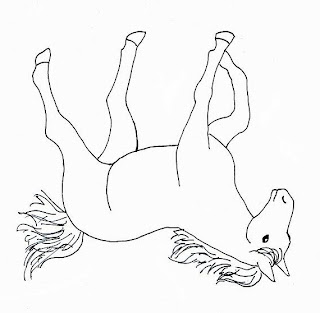First graders finished their weavings using colorful yarn on a loom and learned all about making patterns with color. Following this lesson, we talked about landscapes and discovered ways to add patterns to our painted landscapes too.
A landscape is a type of artwork that shows an outdoor scene. Besides the land, the scene could include trees, flowers, mountains, a body of water, the sky, the sun, clouds, and anything else that could be seen outside. A landscape can also have animals, houses and even people. As long as the scene is about the land and not about one person in the scene, it would be considered a landscape.
 |
| Landscape by David Hockney |
 |
| David Hockney at work |
David Hockney is a working artist from England. We looked at some of his landscapes in our class and saw how he enjoyed working with color and patterns to fill his scenes. Inspired by the work of this famous artist, we took large white drawing paper and drew our own landscapes, using separate areas for the ground, the trees and the sky, and then added patterns to each of these areas. Here we are adding bright colors of paint to our scenes...

















 For example, when you look at a picture of a horse the regular way, your mind invariably takes over as you are drawing and you tend to draw what you remember how a horse looks, and not focus on the details in the picture in front of you. The image of the horse in your mind probably has an four thin legs as all horses do. But are you really seeing those legs as they appear in the picture, with all the angles and the lines?
For example, when you look at a picture of a horse the regular way, your mind invariably takes over as you are drawing and you tend to draw what you remember how a horse looks, and not focus on the details in the picture in front of you. The image of the horse in your mind probably has an four thin legs as all horses do. But are you really seeing those legs as they appear in the picture, with all the angles and the lines?




